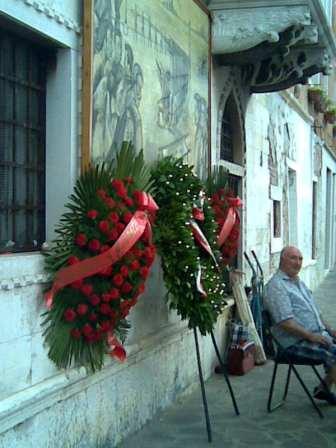There are four places in Venice which share a mystic link, which is discernible only to the initiated. The initiation will now proceed:
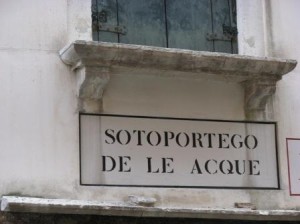
The “waters” in this street name are not those of the adjoining canal, you may be glad to know.
They were the delightful iced drinks which were sold in shops often called botteghe da acque, or “shops of the waters.” Such a shop was doing great business here in 1566, run by a pair of brothers, Alvise and Girolamo Giusto.
In 1724, a guidebook stated that “The best chocolate, coffee, refreshing frozen waters, and other such drinks are made and sold in the Calle delle Acque, near the Ponte dei Baratteri.” Right here, in other words.
These places were not unlike the cafes we know today; they were often small, crowded, loud, and attractive to gamblers. (There are still assorted joints around town where little old men sit all day playing cards and shouting at each other, but their drinks usually involve some kind of alcohol, and it’s not particularly frozen, either.) On November 10, 1756 a decree forbade gambling in this very locale, which leads me to suspect that things had gotten even further out of hand than was usual.

Frozen beverages require ice, which was made and sold in various places around the city. Older Venetians have no trouble remembering the boats loaded with large blocks of ice, which the men who rowed the boats would haul ashore wrapped in sheets of coarse hemp to whatever customer had ordered it. The block went into the refrigerator — in America it was simply called an icebox — where it kept the food cold (or cool, anyway) until it had melted away, dripping into the pan below.
In 1661, when this street was mentioned in a property document, the sale of ice was a semi-monopoly of the coffee business. This is not surprising, considering that the coffee-house was where the iced drinks were made.

While we’re discussing potables, you also had the option of something stronger, particularly grappa and its relatives, distilled liquids near which one should not play with matches.
The spelling of this street name is a bit eccentric; it ought to be acquavite, or “water of the vine,” as grappa and some of its relatives are made by distilling either wine or grape residue (vine, stems, seeds, skins, etc.), while aquavit is made from grain. But as the word has also been transmogrified into acqua vitae, or “water of life” (“life” being “vita“), we won’t quibble. I guess they know how to name their own streets.
And who had the concession to sell these shots of liquid fire? The coffee-house owners again. In 1711, in the street above, near the church of the Gesuiti, there was just such an establishment being run by a certain Elia Giannazzi. By 1773 there were 218 shops in Venice specializing in acquavite. Life was hard, winter was long, it kept you going.
A very Venetian product which Giannazzi and his confreres would also have sold was rosolio. Still made today in various forms, it is a liqueur made of rose petals which is often used as a base for other liqueurs. I’m not sure what would happen if you asked for rosolio in a cafe or bar today; you’d probably have better luck asking for one of its siblings, such as limoncello or maraschino.
A note on alcohol: You will frequently read that alcoholism is hardly known in Italy because wine is such an integral part of the culinary and social culture. Children start sipping wine at an early age, at meals, and so it is assumed that they are immune to excess. However, these cliches do not acknowledge the popularity and omnipresence of what are generally termed super-alcoolici, or hard liquor, especially with people living along Italy’s northern rim where mountain traditions often involve making and consuming highly inflammable liquids.
Young people today in Italy may or may not drink wine with their meals, but increasing numbers of them will almost certainly be binge-drinking hard liquor in discos and bars on the weekend and then attempting to drive home. In Venice, this often means using a motorboat, probably without any lights on, usually at high speed. More often than you’d wish, you read about some adolescent who never made it because he “painted himself on a piling,” as they say here. Or dying by alcohol poisoning. And in case you’re tempted to similarly romanticize the seemingly so-grown-up approach to alcohol in France , which like Italy shares the stereotpical image of the jovial family, children included, tranquilly drinking wine out in the garden with their baguettes and challenging cheeses and all, I merely note that France has the highest rate of alcoholism in the world. So, easy with the cliches, here as everywhere. Nothing is simple.
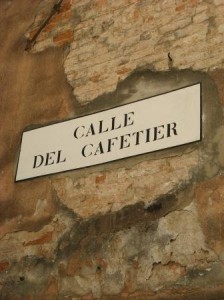
And so we come to the fountainhead of all these concoctions: The cafetier, who sold and prepared coffee to be consumed on the spot and who, as we have seen, had his finger in the ice and booze businesses as well.
Coffee has a long and glorious history in Venice; Venetian merchants first recorded its use in Turkey in 1585, and began to sell it in Venice in 1638, whence the enthusiasm for coffee-houses spread across Europe. The Caffe Florian in the Piazza San Marco opened on December 29, 1720, and makes a good case for being the oldest coffee house in continuous operation.
The “mystic link” I mentioned above is therefore revealed to be coffee. The coffee-house owners and/or operators managed a very large slice of the liquid refreshment business in Venice, and while Venetian coffee doesn’t enjoy the fame of its Neapolitan or Roman cousins, I’m willing to call it the water of life. Especially first thing in the morning.

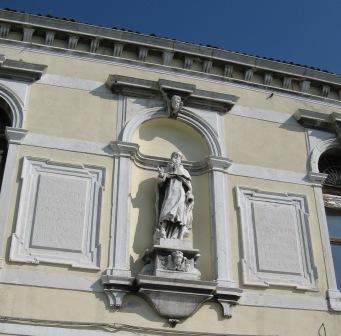
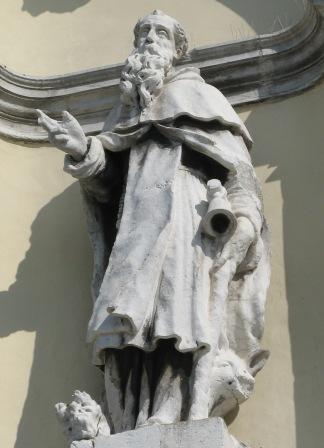
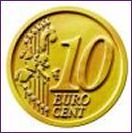

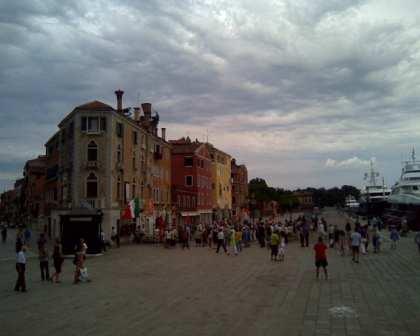
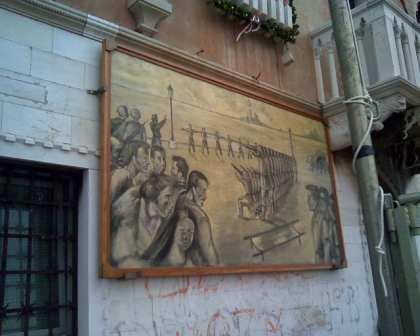
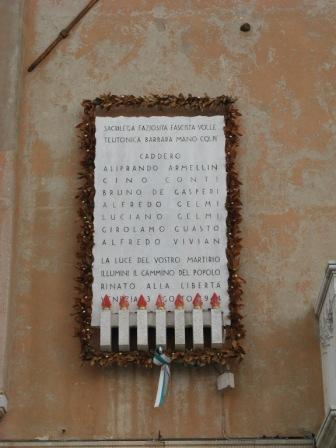
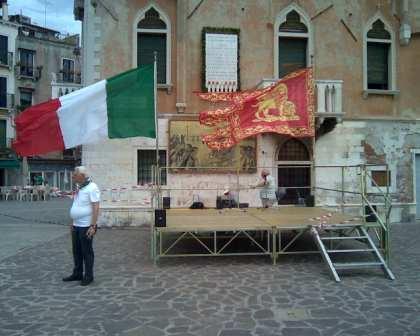
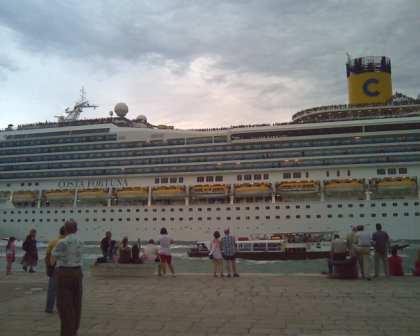 allotted. It looked as if the total passenger payload (2,716) was lined up on the brim of the topmost deck watching the panorama of Venice slip past as they headed out to sea. I suppose that we and our little banners looked as tiny to them as they did to me. I wonder if anybody but me happened to notice the empty silent space separating their moment here and that of the men whose last was spent at almost the same spot.
allotted. It looked as if the total passenger payload (2,716) was lined up on the brim of the topmost deck watching the panorama of Venice slip past as they headed out to sea. I suppose that we and our little banners looked as tiny to them as they did to me. I wonder if anybody but me happened to notice the empty silent space separating their moment here and that of the men whose last was spent at almost the same spot. 